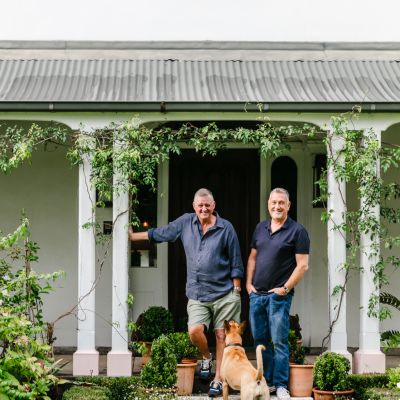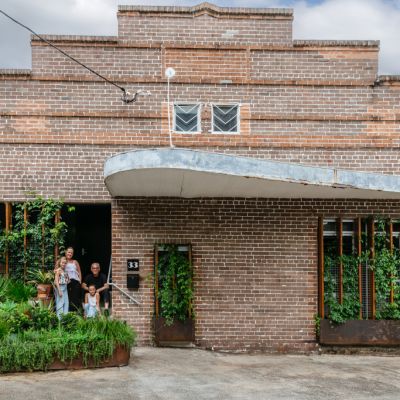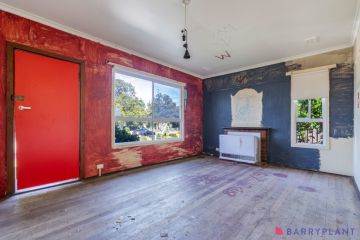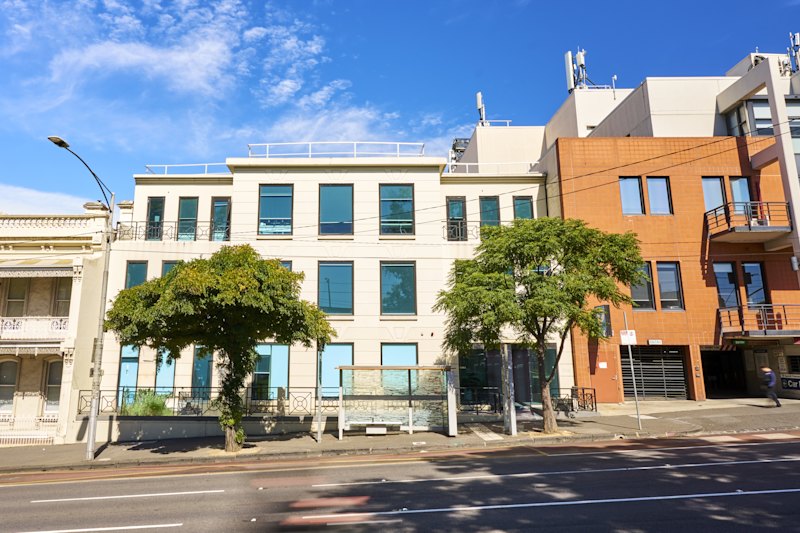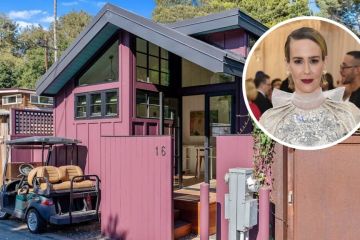Old rickshaws and vintage chandeliers: Inside a 160-year-old vicarage full of treasures from around the world
- Owners: Professional renovators Dean Hobson and Camilla Connoley
- Address: 42 Service Street, Clunes, Victoria
- Type of property: An 1860s architect-designed vicarage restored with style and personality
- Price: $1.49 million-$1.59 million
Dean Hobson and Camilla Connoley are avid collectors, which goes a long way to explaining how two jaunty rickshaws from Java came to be parked in the garden of their historic property in the goldrush town of Clunes, just north of Ballarat.
“We found [them] in a junkyard and thought they were too good to be true,” Hobson says with a laugh. “You might call it eccentric, but it doesn’t feel eccentric – but that’s just my opinion.”
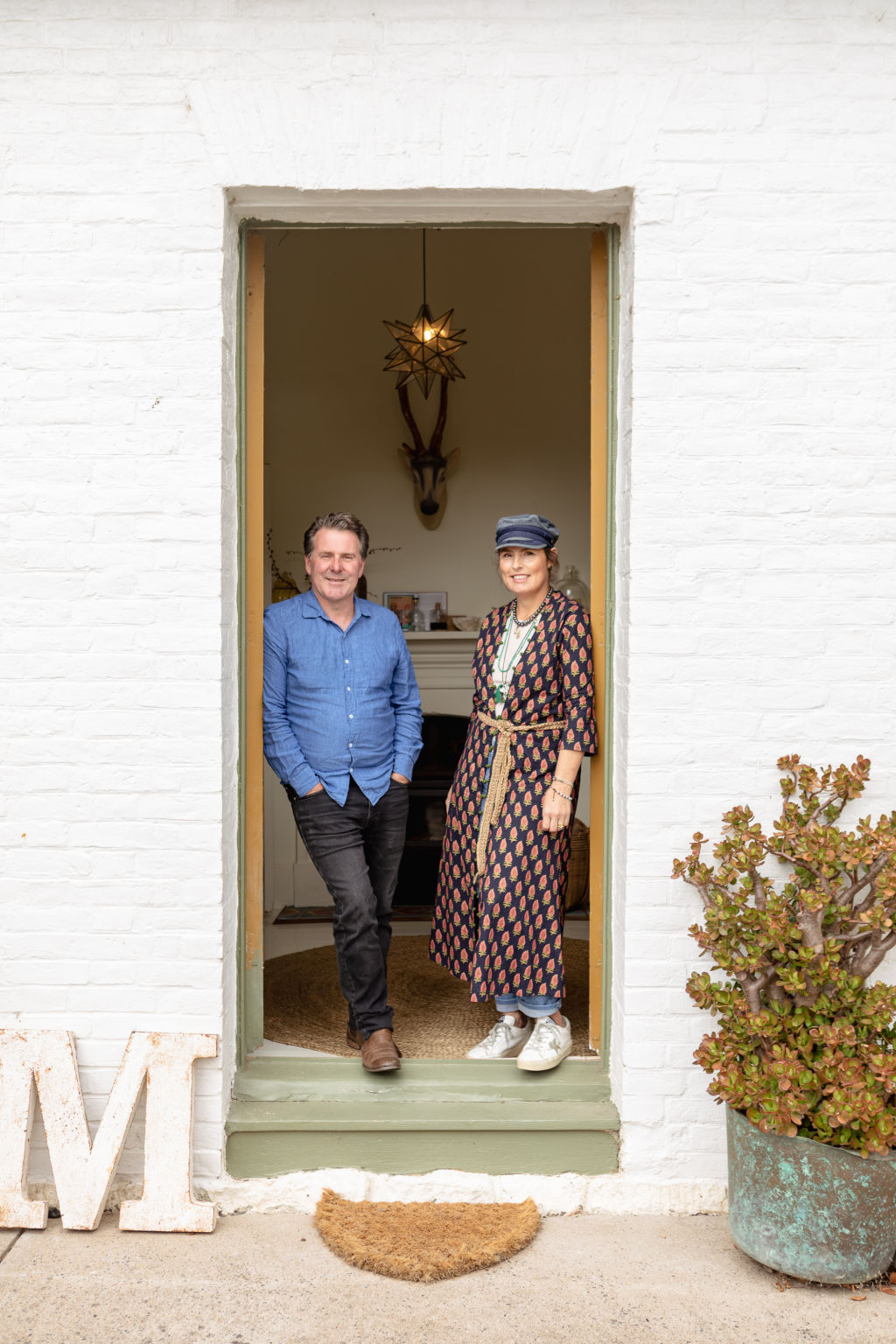
The house brims with an array of treasures collected over the years – vintage chandeliers from a nightclub in Hawthorn (the largest of which had to be lifted into position by a small crane), handmade tiles from a Belgian monastery, a glass-topped island bench that was once an old shop counter in Daylesford and a beautiful window that was salvaged from a Port Fairy bank.
In the main bathroom is a pressed-metal handbasin sourced via Etsy from a group of Ukrainian women who had set up their homewares business in Poland after fleeing their war-torn homeland.
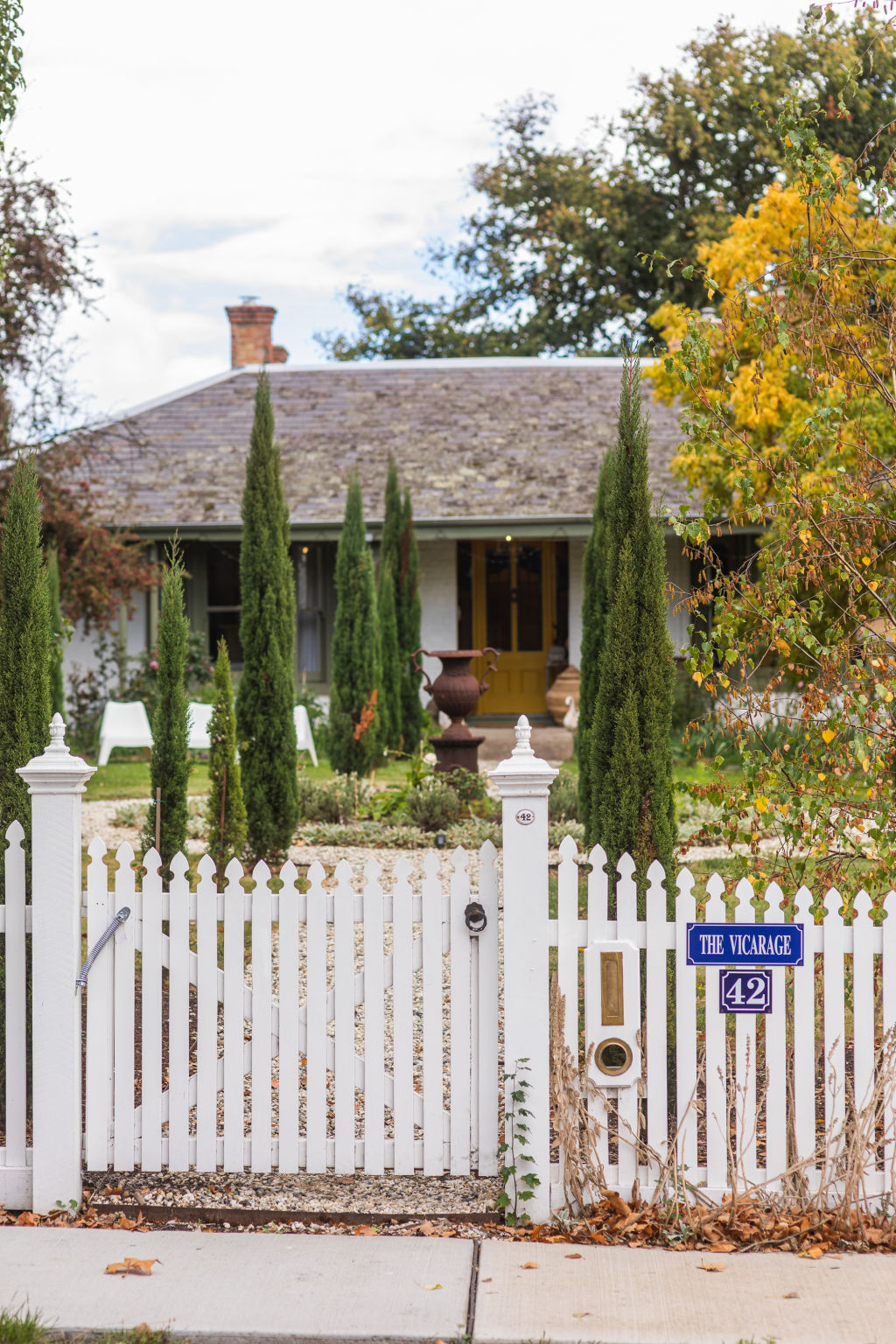
“A lot of things we’ve found in the past and we put them aside and say, ‘They’ll find a use one day, they’ll fit somewhere,’ ” Hobson says. “The beauty of The Vicarage is the scope of the property means we could do unusual things. Wherever possible we have used old and interesting items to complement the existing house.”
The couple, who work together flipping period cottages in the Ballarat region, are well-versed in property restoration, but this project was on a grander scale and intended to be a keeper. They bought the 160-year-old house while on the hunt in 2021 for something “a little bit different” and then spent 18 months “bringing it back to life”.
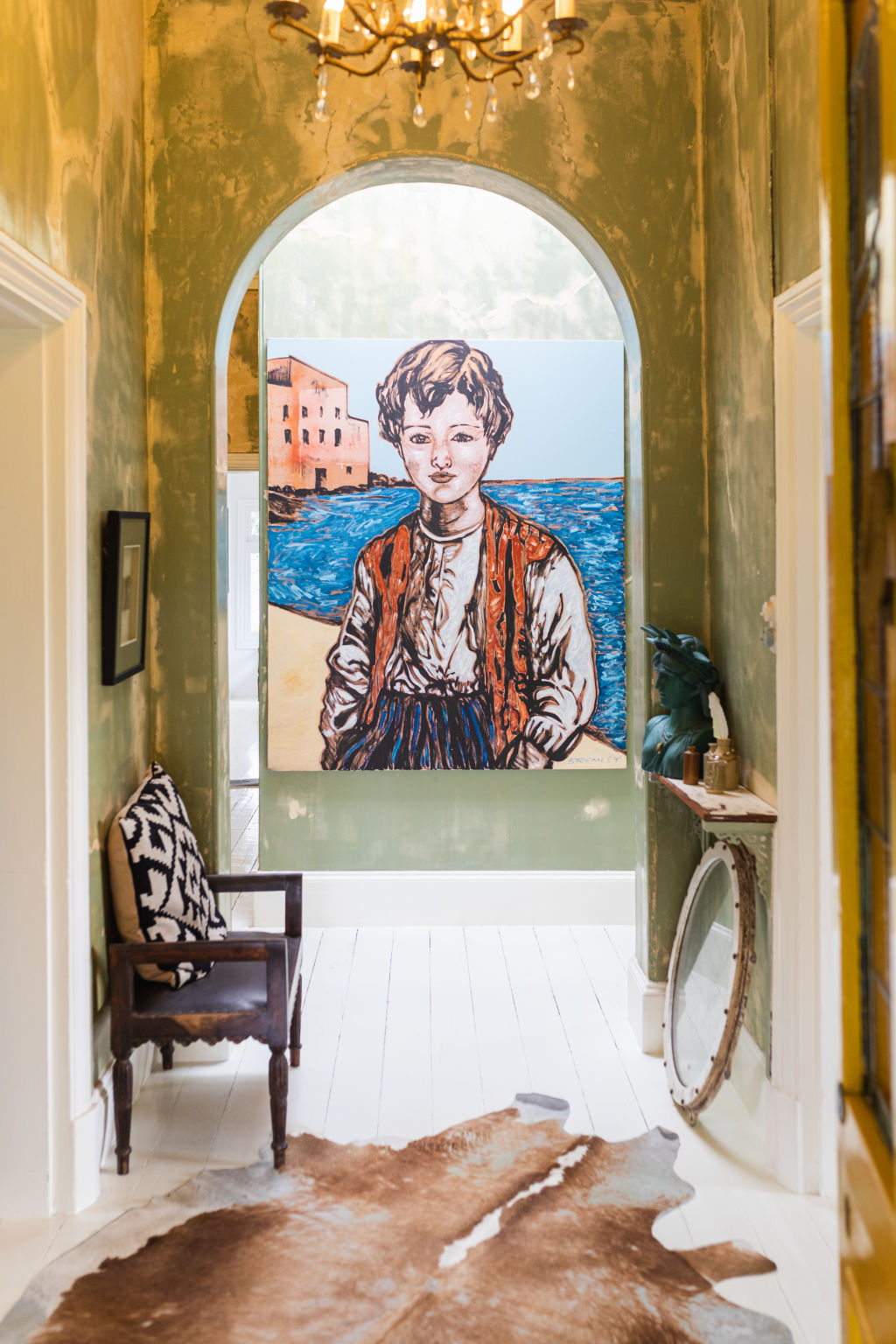
Built for the Anglican church in 1862, The Vicarage was designed by renowned colonial architect Leonard Terry.
Hobson says a substantial church budget is evident in the “thoroughly over-engineered” building, which stands on solid bluestone foundations with external walls three bricks deep. An extensive slate roof meets the edge of the wide, wraparound verandah, beneath which are large bay windows.
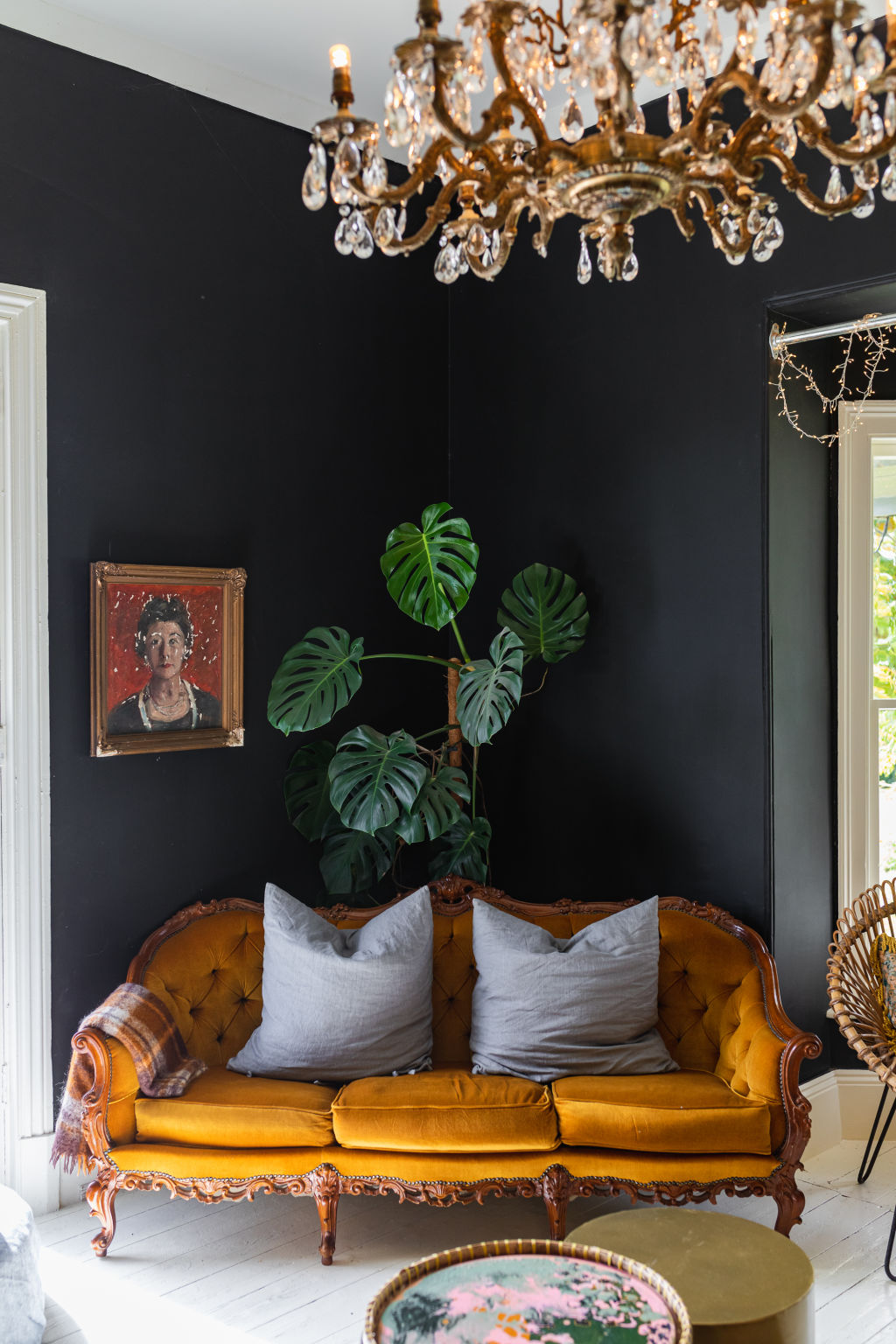
“It’s not a common design that you would see around the state at all,” Hobson says. “The impression that I have is that it’s inspired by a French country house of that period.
“The minute we pulled up it was, ‘Wow, this house is special,’ and then, when the agent opened the door and we saw the beautiful period archway, it was immediately inspiring.”
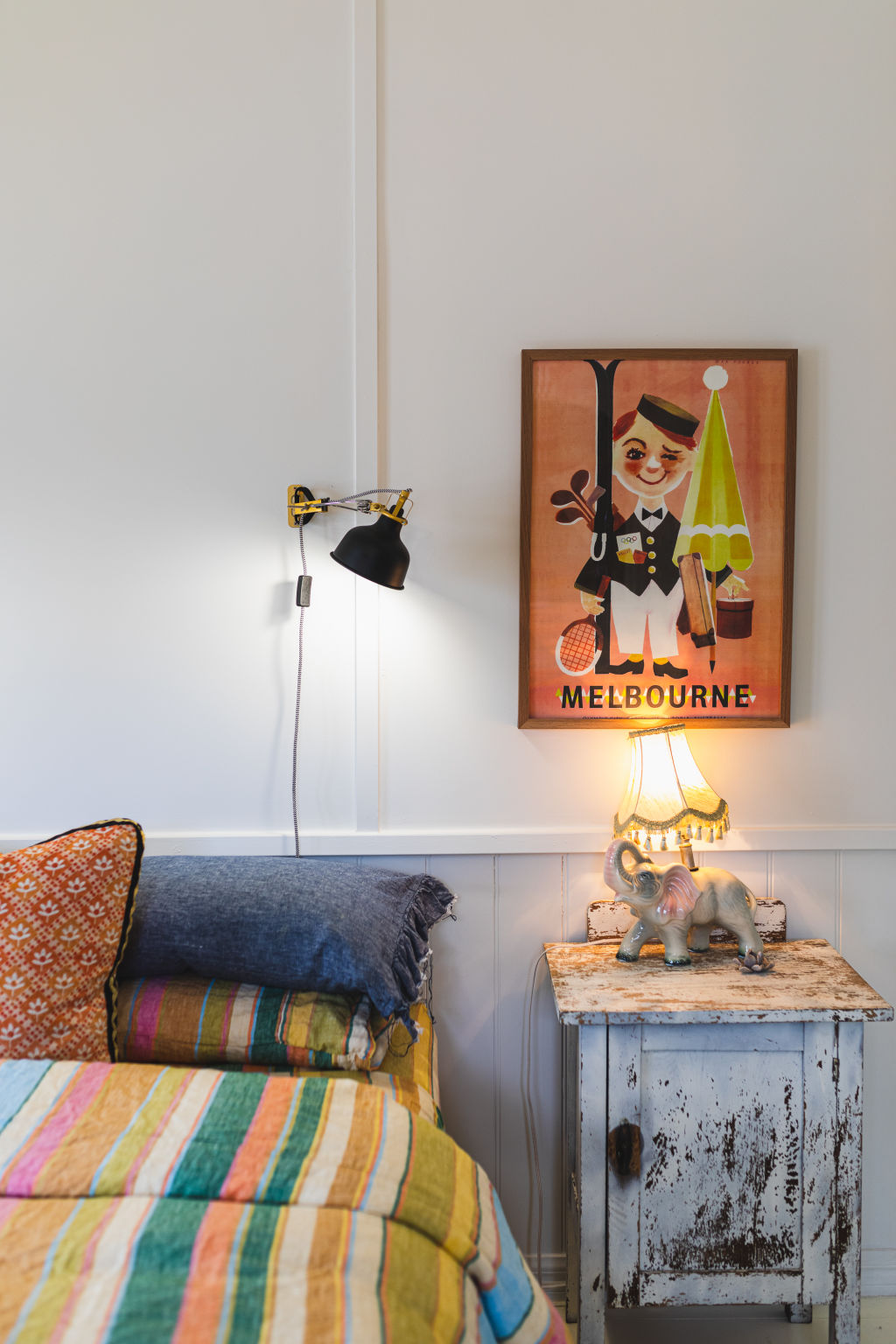
Hobson says the couple’s vision for the house came together on the spot. Structurally, it was extremely sound, so the plan was to retain the floor plan. Instead, they set about revealing the original patina of the hallway walls, restoring old fireplaces and bringing the French doors back to working order.
Rooms have been decorated with colour and texture and filled with one-of-a-kind curiosities and special antique pieces. In fact, each of the four double bedrooms has such a different “vibe” that Hobson confesses, with a laugh, that the couple often switch rooms to enjoy the illusion of a getaway.
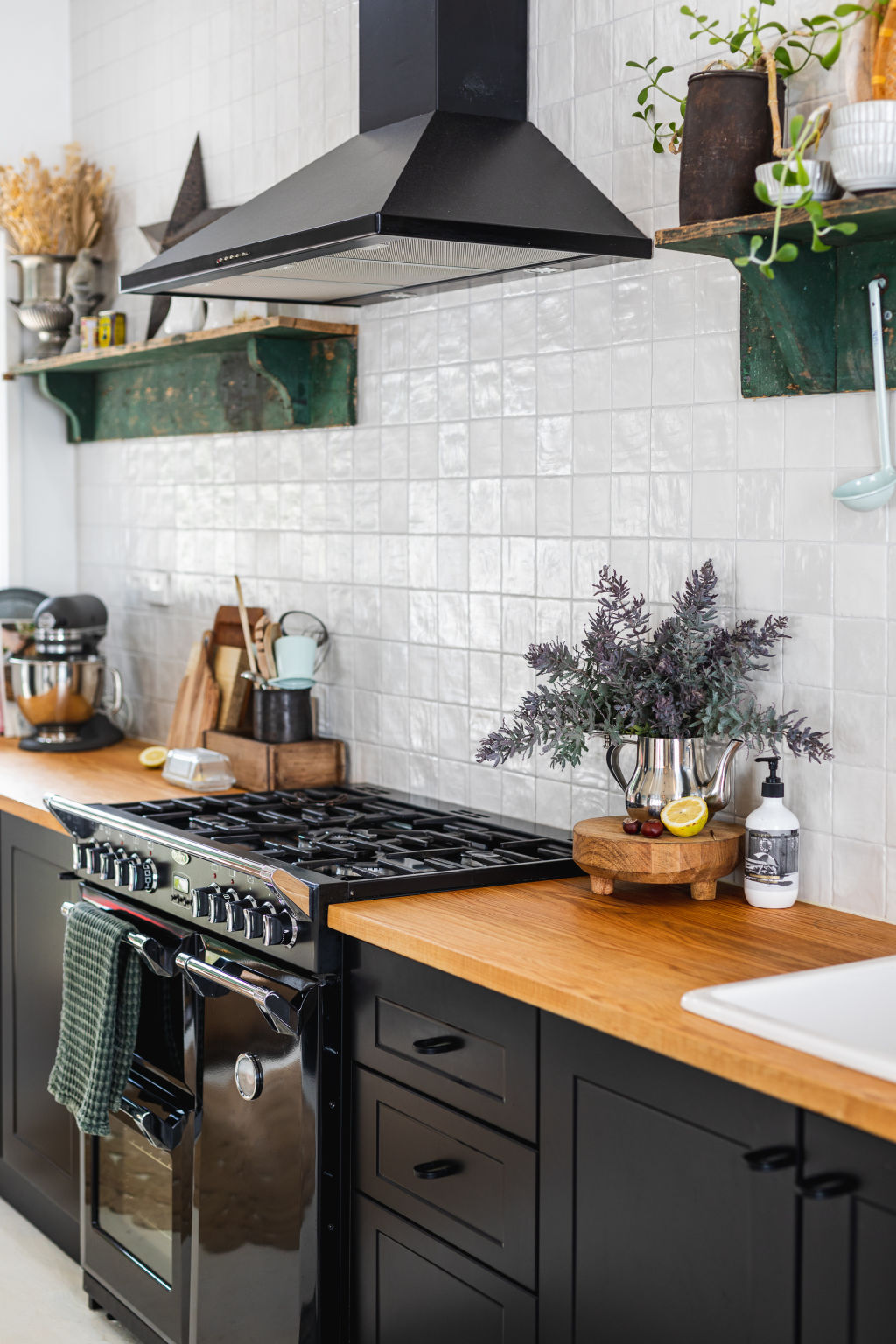
“Although we come from different styling backgrounds – I’m more mid-century modern and Cami is more what I would call ‘coastal boho’ – we somehow blend those two styles together,” Hobson says. “I think it’s pretty obvious that, styling-wise, this house is not out of a book.”
Outside, where the rickshaws stand ready, antique doors from India frame the courtyard on three sides, while a fire pit has been reimagined from a vintage dahl cooking pot. An expensive, handcrafted stainless steel hot tub imported from New Zealand caters to evening wind-downs and can be included in the sale for a fee. Hobson and Connoley have worked tirelessly to create a bountiful vegetable garden and have planted an olive grove and orchard, still in their infancy.

Overhanging it all, a magnificent 160-year-old elm turns golden and drops its leaves, making way for the winter sun to stream into the living rooms. By summertime, its canopy of green will again cool the house, as it has done for generations.
“We don’t consider ourselves owners of the house; we see ourselves as custodians,” Hobson says. “I know that sounds cliched, but it definitely feels different. You do feel like you are a part of the story of something and however long you’re living there you are leaving your print on it.”
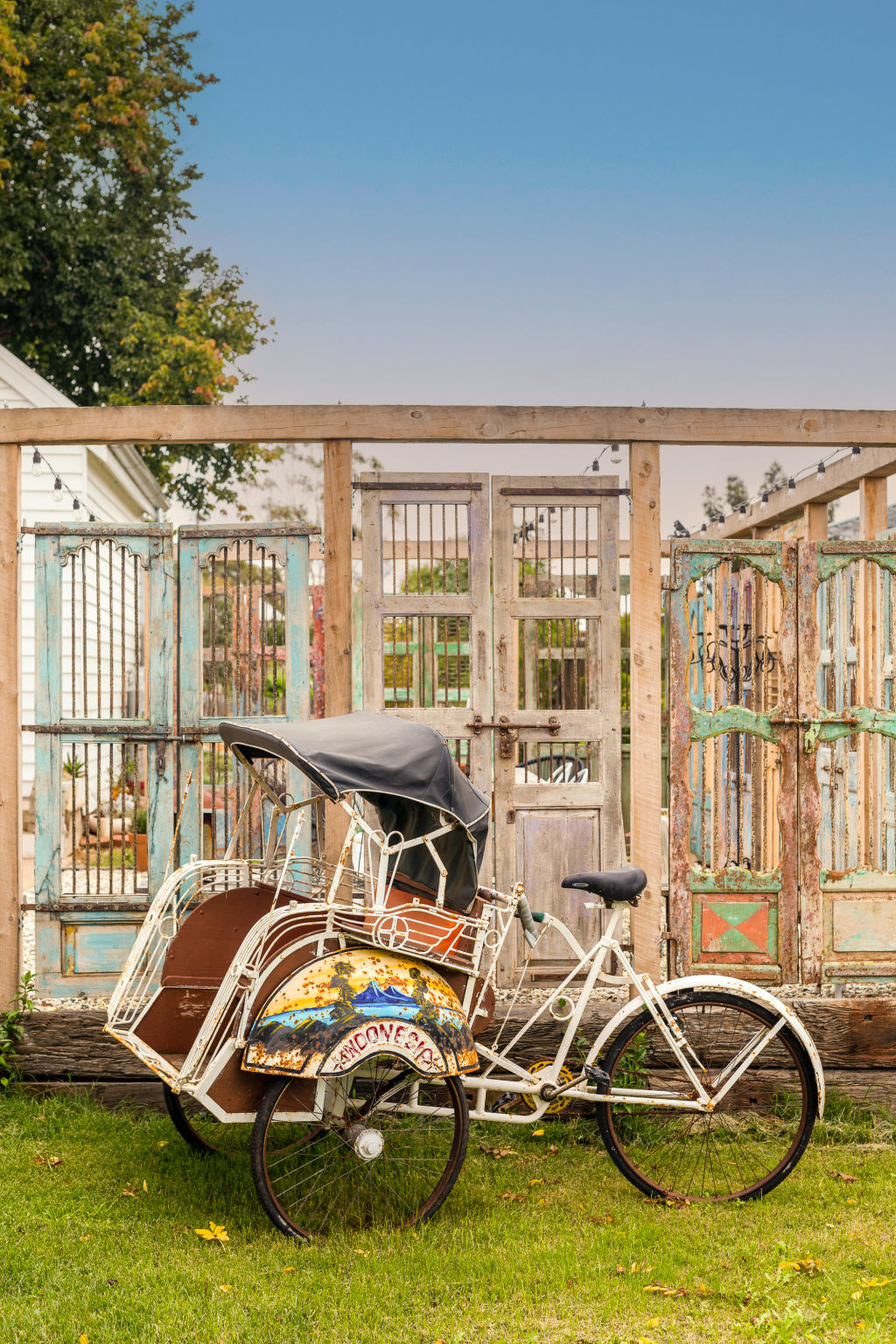
Despite planning this home with “forever” in mind, family commitments have pulled the couple away from the lovely, community-minded village of Clunes. The hope is that the house will find a new custodian who treasures The Vicarage’s legacy – and doesn’t mind a little bit of eccentricity.
When you’re restoring a house for yourself, Hobson says, it allows you to make decisions you can be passionate about, without being concerned about what other people might think.
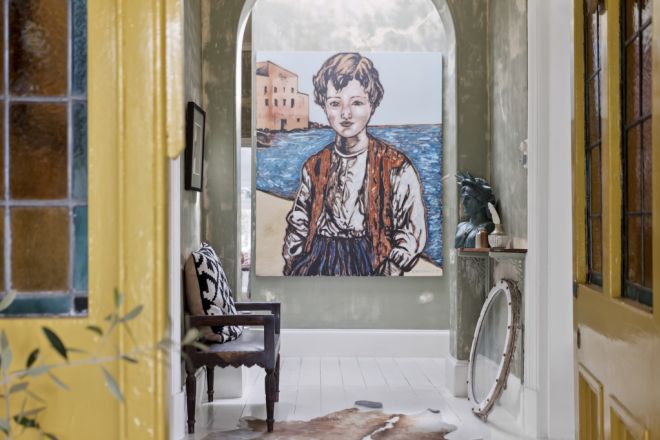
“You probably wouldn’t paint your lounge room with Porter’s Squid Ink if you were planning to put the house on the market,” he jokes. “But so many people love it, and the matte black actually highlights furniture and artworks, so it’s not as crazy as it sounds.”
We recommend
We thought you might like
States
Capital Cities
Capital Cities - Rentals
Popular Areas
Allhomes
More
